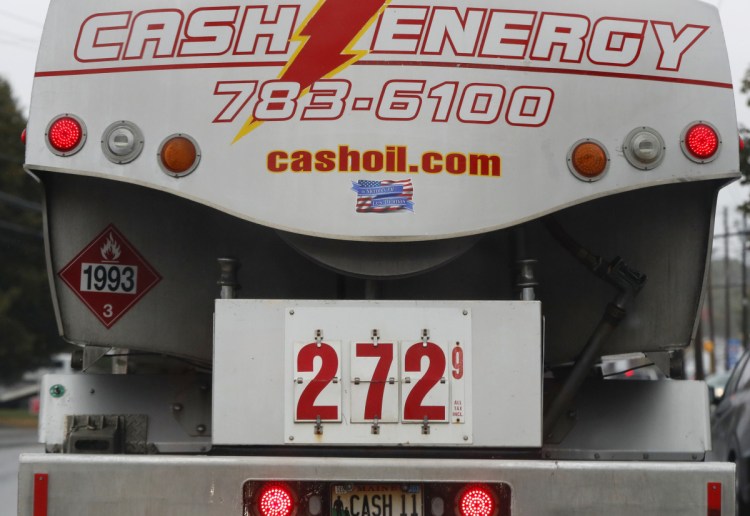The cost of staying warm this winter is going to grow for the average American, and it’s going to be especially painful for those who rely on heating oil, a federal agency said.
The U.S. Energy Information Administration forecasts a 20 percent increase in spending for heating oil but more modest increases of 3 percent for electricity and 5 percent for natural gas. Propane expenditures are expected to be roughly on par with last year, the agency said.
It’s tough news for residents of the Northeast, which accounts for more than 80 percent of the nation’s residential heating oil consumption.
“It’s a very big increase to the average American who’s trying to live paycheck to paycheck. That puts terrible pressure on them,” said 80-year-old Agnes Jones, of Lebanon, Maine, who’s getting by with help from federal heating assistance.
Heating oil tracks closely with the price of crude oil, which is projected to dip slightly this winter but to remain higher than last winter, the agency said.
The projected home heating expenditures, which vary by region, are based on both projected energy costs and temperature forecasts. The vast majority of homes in the U.S. are heated with natural gas and electricity.
Mark Wolfe, from the National Energy Assistance Directors’ Association, said he fears the projections are overly optimistic and increases may be much higher.
The national average masks a doubling of heating oil expenditures over a three-year period, he said. The agency projects a $1,646 cost this winter for the average homeowner who heats with oil, Wolfe said.
“For lower income families, the impact of these prices is nothing short of devastating,” he said. “When faced with high energy prices, families have to make tough decisions. They choose between heating and medicine, food and other essentials.”
Across the region, many folks are doing what they can to reduce their heating costs.
Carrie Gervais, of Chelsea, Maine, just upgraded installation in her 1844 farmhouse to reduce energy costs. That’s on top of replacing her oil-fired furnace last year.
“It’s going to mean long-term savings,” Gervais said, noting that she’ll be applying some of the savings to a vacation and further home improvements.
There’s some good news for people who struggle to heat their homes.
Despite the Trump administration’s efforts to kill the federal heating aid program, Congress has spared the program and increased spending by $300 million over a two-year period. All told $3.7 billion is available this year under the Low Income Home Energy Assistance Program.
Send questions/comments to the editors.


